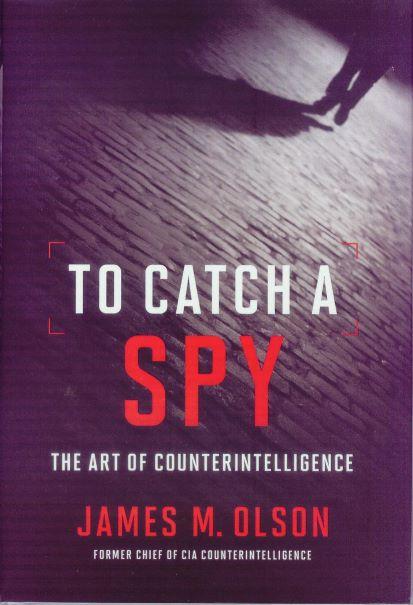
“I am deeply concerned that the principles I consider fundamental for effective CI are not being followed as carefully and consistently as they should be.”
“Few Americans realize the extent to which foreign intelligence services are stealing our most important secrets, right here at home, right under our noses.”
James M. Olson, former chief of the Central Intelligence Agency’s counterintelligence (CI) operation and now a Texas A&M professor, gets right to the point in his new book, To Catch a Spy: The Art of Counterintelligence (Georgetown University Press, $29.95 hardcover). Olson teaches in the Bush School of Government and Public Service at A&M. His first book, Fair Play: The Moral Dilemmas of Spying (2007), was a fascinating look at fifty potential espionage scenarios. His new book focuses on catching American residents who are spying for foreign countries. “Too many Americans are sadly willing to betray us by selling out or by playing fast and loose with our security,” Olson writes. “They are doing grave damage, sometimes irreparable damage, to our country. They must be stopped.”
Olson goes into depth on the three major foreign intelligence threats to the U.S.—China first, then Russia, then Cuba. “The Chinese are mounting a massive espionage, cyber, and covert action assault on the United States,” Olson maintains. “Their goal is to catch up with the U.S. technologically, militarily, and economically as quickly as possible.” China, he writes, actively recruits—especially in engineering and technical fields—Chinese students, travelers, and newly naturalized American citizens who may still feel an allegiance to Mother China. “The enormity of the Chinese espionage effort is staggering,” Olson says. “And it is getting worse. Chinese spying is so pervasive and relentless that U.S. companies remain extremely vulnerable.”
Throughout the book, Olson cites specific names and cases of spies who have been caught and sentenced to prison, but often after years of leaking damaging information. He devotes a seventy-seven-page chapter to a dozen case studies which “illustrate succinctly some of the most important dos and don’ts of good CI.” After each story, Olson offers several “lessons learned” from the case that could help improve America’s counterintelligence efforts.
Olson also suggests “The Ten Commandments of Counterintelligence” based on his CI experience, and he concludes, “I am deeply concerned that the principles I consider fundamental for effective CI are not being followed as carefully and consistently as they should be.”
At the end of the book, Olson compiles a reading list of twenty-five books dealing with counterintelligence, including a brief summary of each book’s thesis. “If you read these twenty-five books,” he writes, “you will know your history and have earned the equivalent of a master’s degree in strategic counterintelligence.” But if a list of twenty-five books seems a bit much, just start with To Catch a Spy, which provides a succinct (192 pages) and very approachable overview, then go back and read Olson’s earlier book, Fair Play, now in paperback.
Glenn Dromgoole writes about Texas books and authors. Contact him at g.dromgoole@suddenlink.net.
